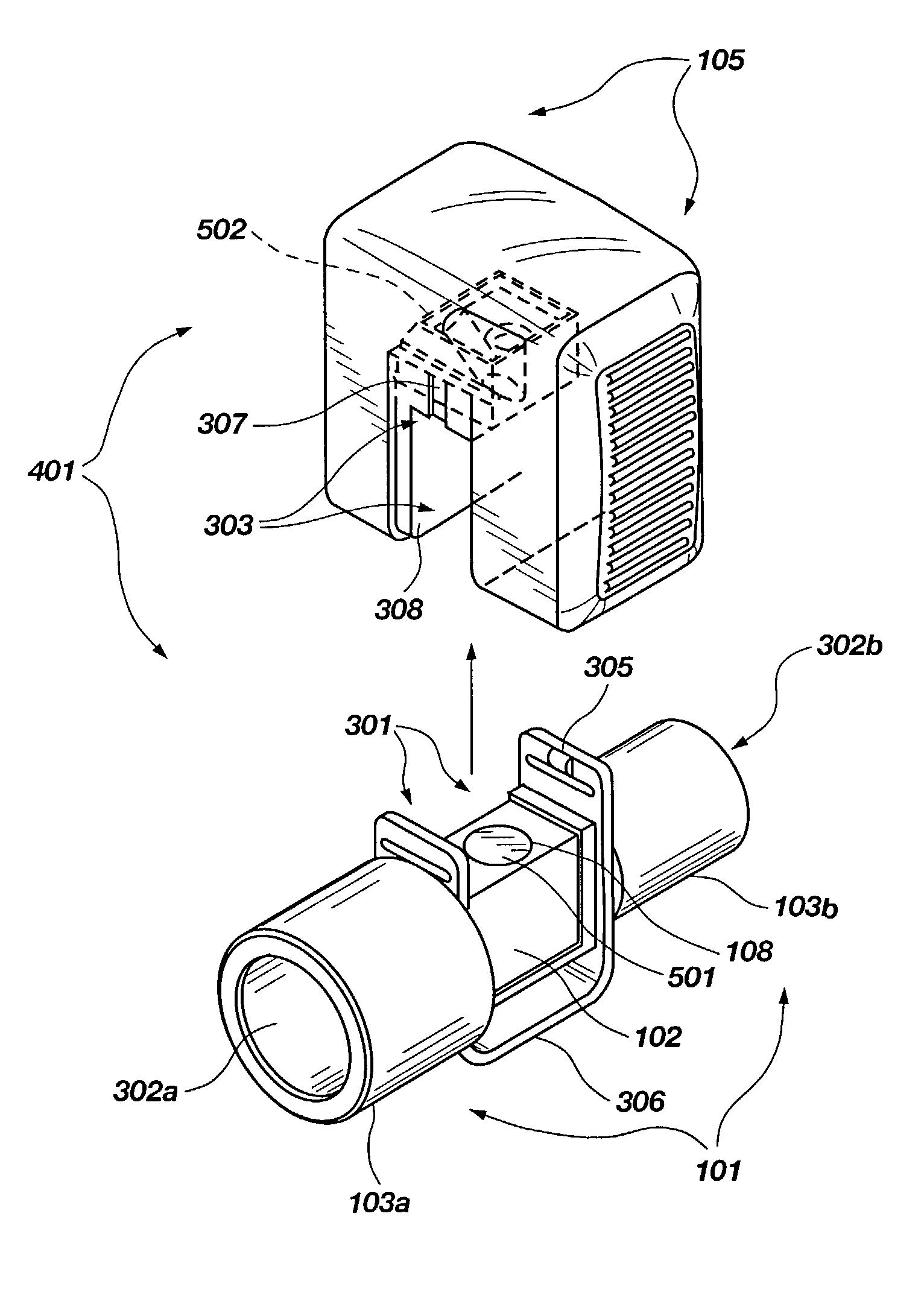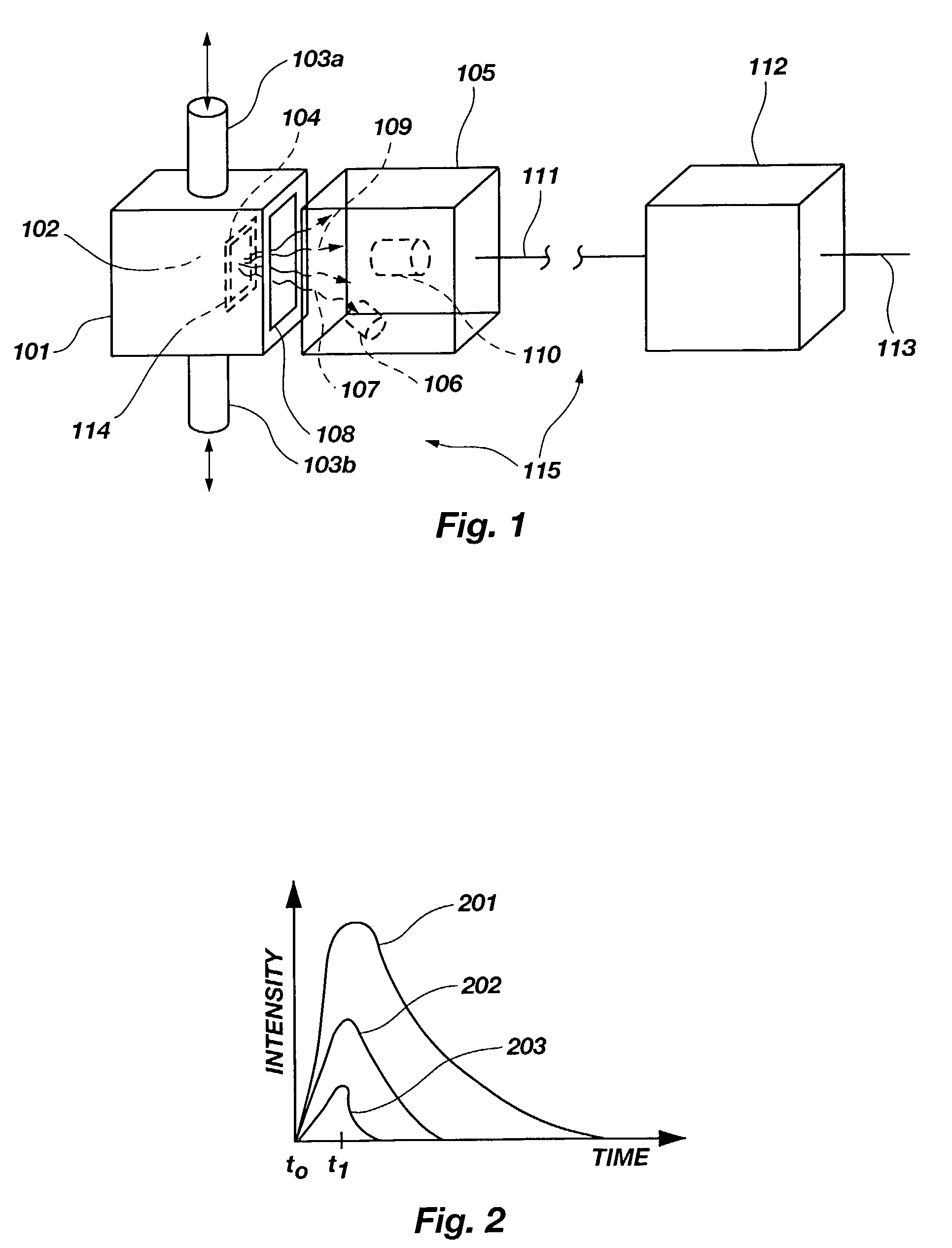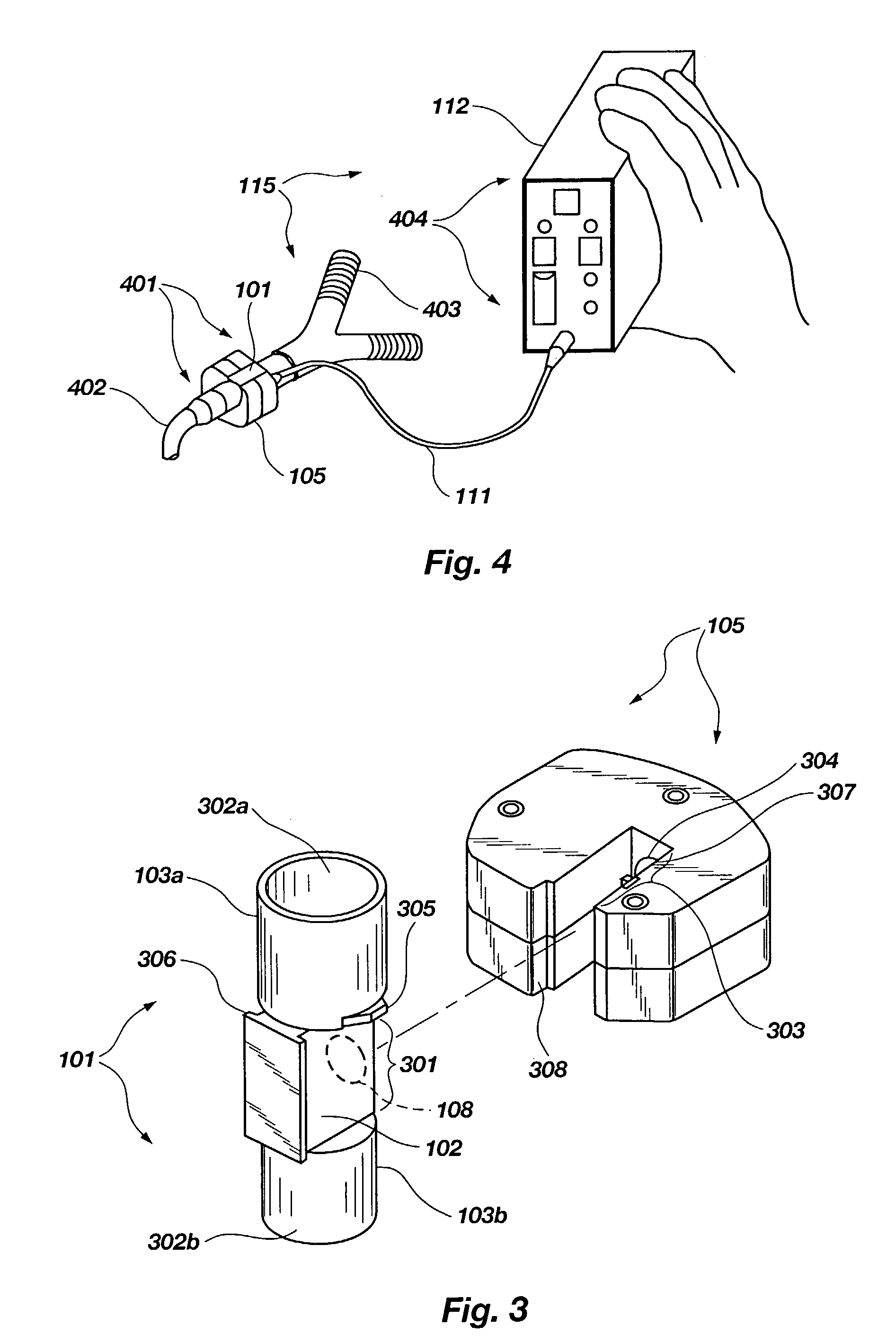Oxygen monitoring apparatus and methods of using the apparatus
- Summary
- Abstract
- Description
- Claims
- Application Information
AI Technical Summary
Benefits of technology
Problems solved by technology
Method used
Image
Examples
Embodiment Construction
[0073]The descriptions contained herein adhere to a numbering convention intended to facilitate understanding and make for easy cross-referencing of described features between figures. In this convention, the first digit (for features indicated by a three-digit reference number) or the first two digits (for features indicated by a four-digit reference number) correspond(s) to the figure number in which the feature is first described. Like features are thus identified by the same reference number throughout the detailed description. In some instances, features described by the same reference number may have a different physical appearance in two or more figures. In this case, the use of a like reference number is especially useful in drawing the attention of the reader to various physical embodiments that a given feature of the invention may have. Features first introduced within the same figure are numbered more-or-less consecutively in a manner corresponding to the order in which t...
PUM
 Login to View More
Login to View More Abstract
Description
Claims
Application Information
 Login to View More
Login to View More - R&D
- Intellectual Property
- Life Sciences
- Materials
- Tech Scout
- Unparalleled Data Quality
- Higher Quality Content
- 60% Fewer Hallucinations
Browse by: Latest US Patents, China's latest patents, Technical Efficacy Thesaurus, Application Domain, Technology Topic, Popular Technical Reports.
© 2025 PatSnap. All rights reserved.Legal|Privacy policy|Modern Slavery Act Transparency Statement|Sitemap|About US| Contact US: help@patsnap.com



